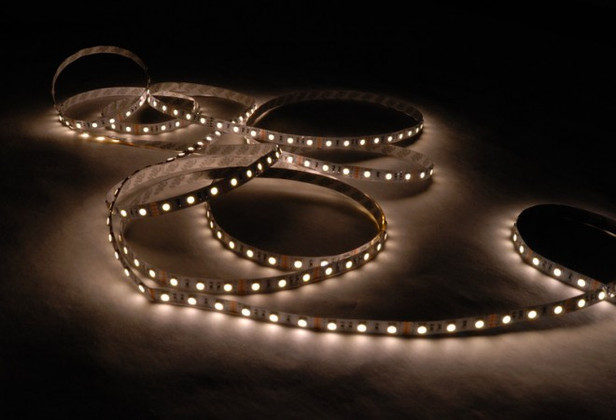
How to Power Your LED Light Strips
11/13/16
There’s no end to the ways you can utilize LED light strips to add illumination and ambience to any room, or even outdoor spaces. You may be most familiar with LED lights in alarm clocks and on DVR displays. However, you can now use these long-lasting, energy-saving lighting options throughout your home in a variety of ways. LED light strips, in particular, are extremely versatile. You can add them to all kinds of places around your property. Certainly they can serve a practical purpose. You can place them under high cabinets to add lighting to work spaces like the kitchen counter, your laundry room folding station, or a work bench in the garage, just for example. They can also highlight architectural features in your home. Simply position them along base boards or crown molding, place them around windows and doors, run them along the edge of a staircase or up a bannister, or even add them to furniture, like the underside of a dining table or the inside of a cabinet with glass doors. In short, there are numerous ways in which you can get creative with strip lights. The same is true for other LED lighting options like rope lights or pucks, for that matter. The practical question you have to ask, however, is how you’re going to power these lights. You might not be keen on running cords all over your house to get the lighting effects that you crave. Here are a couple of options to consider.
Contact the Dealer
More often than not, LED light strips will come with its own power supply attached, or at least included. If this isn’t the case, there’s a good chance the dealer or manufacturer of the light strips also sells power supply setups so you can get your light strips up and running. There are endless tutorials online to help you get LED strip lights working. You will, however, want to make sure that you’re using the correct power supply. You don’t want to accidentally overload the strip and blow out the lights. The best way to ensure you’re using the correct load is to purchase the appropriate power supply for your strip lights. Keep in mind that hooking up power to lighting fixtures on your own can be dangerous. You never want to risk electrocution or start an electrical fire. If you have little experience working with electronics or you’re unsure about creating a safe and stable product, it’s best to seek out fixtures that have their own power supply rather than testing your DIY skills.
Hard Wiring
The best way to power your LED lights is to hard wire them into your electrical system. Unless you’re a pro yourself, you’ll want to hire a professional electrician to manage this task for you. He or she will cut holes in the walls to run cabling in order to attach your new lights to proper electrical outputs. They will also add new switches on the wall so that you can easily turn your strip lights on and off. You will then want to patch your walls, and viola – easy access to lighting. These days you can set up lights to work with a remote control or on an app for your smartphone. The nice thing about spending a little extra to go this route is that you won’t have any noticeable cables or wires. Unfortunately, you won’t have the option to move your lighting once it’s in place. You will, however, have the peace of mind that comes with knowing your electrician has followed applicable building codes and safely installed your lighting.
Exposed Cords
Perhaps you’re the type that likes to keep your options open. If so, you can simply use strip lighting that comes with a power cord you can plug into the wall. This simple solution means that you will have a cord dangling off the end of your light strip. There are, however, plenty of creative ways to run cords around edges of cabinets or corners of walls to hide them.
Batteries
One final option to power strip lighting is the use of battery packs. This isn’t the ideal solution as you’ll have to change batteries periodically. You’ll also need to find a place to mount and hide the battery pack. That said, this option allows you to enjoy the same opportunity to move lighting as you’ll get with a power cord, as well as the benefit of hiding the power supply, like when you hard wire your lighting. Each option has benefits and drawbacks. You’ll simply have to weigh your needs to determine the best way to power the LED strip lights in your home.


